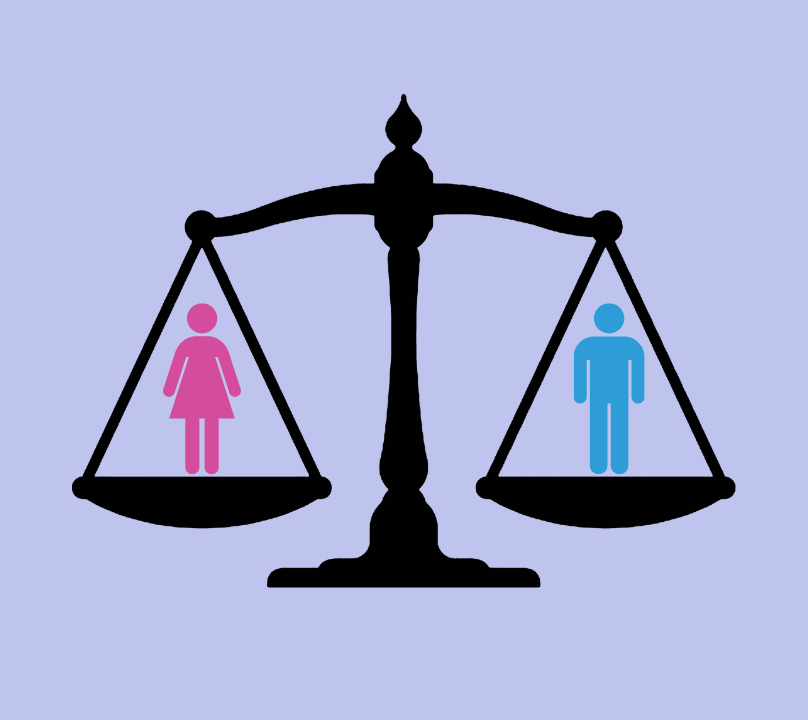Power, Leadership, State, and Development
Let’s delve into the topics of *Power, Leadership, State, and Development* from a sociological perspective, providing detailed insights and long-form explanations for each concept.
### 1. **Power:**
Power is a fundamental concept in sociology and political science, referring to the ability of individuals or groups to influence or control the behavior of others, even against resistance. Sociologists examine power not only in terms of its sources but also in terms of its effects on social structures, institutions, and everyday relationships. Here are some of the key dimensions of power:
#### A. **Theories of Power:**
- **Max Weber’s Three Types of Authority:**
Weber categorized power based on how it is legitimized:
1. **Traditional Authority:** Power that is based on long-standing customs, practices, and beliefs. For example, monarchies and tribal leaders derive their authority through traditional structures.
2. **Legal-Rational Authority:** Power that is based on formal rules and regulations, such as bureaucracies and modern nation-states. Leaders derive their legitimacy from the legal order.
3. **Charismatic Authority:** Power derived from the personal qualities of an individual leader, who is believed to possess extraordinary qualities. For example, political revolutionaries like Mahatma Gandhi or Nelson Mandela.
- **Marxist Perspective on Power:**
According to Karl Marx, power is fundamentally tied to the control of the means of production. For Marxists, power is an instrument of class domination, where the ruling class controls economic resources and uses the state and other institutions to maintain its dominance.
- **Michel Foucault’s Concept of Power:**
Foucault sees power as pervasive and decentralized, operating through discourse, knowledge, and institutions. Power is not just about domination but is diffused through everyday practices, norms, and social institutions, constantly shaping and reshaping identities and behaviors.
#### B. **Forms of Power:**
- **Coercive Power:** The ability to use force or threats to compel others to act in certain ways.
- **Persuasive Power:** The ability to convince others to follow certain courses of action through argument, ideology, or symbolic manipulation.
- **Economic Power:** Control over economic resources and wealth, which can be used to influence behavior or achieve desired outcomes.
- **Cultural Power:** Control over symbols, norms, and values, which shapes people’s perceptions and ideologies.
#### C. **Power and Inequality:**
Power is often tied to issues of social inequality. Those who control wealth, knowledge, and institutional resources tend to have greater power. Gender, race, class, and ethnicity are crucial factors that affect who holds power in society and who is marginalized.
### 2. **Leadership:**
Leadership is the process through which one person influences and guides others toward the achievement of specific goals. In sociological and political contexts, leadership plays a crucial role in shaping social movements, organizations, and governments.
#### A. **Types of Leadership:**
- **Transactional Leadership:** This is a more traditional form of leadership, where the leader and the followers engage in exchanges or transactions. Leaders provide rewards or punishments based on performance, such as in business or political organizations.
- **Transformational Leadership:** Leaders inspire and motivate followers to transcend their personal interests for the sake of the group or society. They focus on creating a vision for change and inspiring people to work towards it. Martin Luther King Jr. or Mahatma Gandhi exemplify transformational leaders.
- **Bureaucratic Leadership:** Bureaucratic leaders are characterized by adherence to fixed rules, regulations, and hierarchies. This form of leadership is typical in governmental organizations and institutions where leaders ensure that systems function efficiently through adherence to established procedures.
#### B. **Leadership and Power Dynamics:**
Leadership often involves negotiating power dynamics within groups. Leaders must navigate tensions between authority, legitimacy, and the expectations of followers. Additionally, leadership styles can be influenced by broader social factors such as culture, gender, and political systems.
#### C. **Gender and Leadership:**
There are ongoing debates about the representation and role of women in leadership positions. Feminist theories argue that leadership in patriarchal societies has traditionally been male-dominated, but there are increasing efforts to recognize and promote women's leadership, particularly in politics and corporate sectors.
### 3. **State:**
The state is a central institution in sociology and political science, representing a form of political organization that holds the monopoly on the legitimate use of force within a defined territory. It encompasses the government, legal systems, military, and law enforcement institutions.
#### A. **Theories of the State:**
- **Weberian View of the State:** Max Weber defines the state as an organization that holds a monopoly on the legitimate use of violence within a given territory. It is responsible for maintaining law and order, defending national boundaries, and regulating economic activity.
- **Marxist Theory of the State:** In Marxist theory, the state is viewed as an instrument of class domination. It serves the interests of the ruling capitalist class by maintaining economic and social systems that perpetuate their control over resources and labor. According to Marx, the state would wither away under socialism once class antagonisms are abolished.
- **Pluralist Theory:** Pluralists view the state as a neutral entity that represents a balance of competing interest groups within society. According to this theory, no single group dominates the state, and power is distributed across a variety of actors, such as political parties, business interests, unions, and civil society organizations.
- **Feminist Theory of the State:** Feminist theorists argue that the state is not neutral but reflects and perpetuates patriarchal structures. They critique the state's role in maintaining gender inequalities and call for reforms to promote women's rights and social justice.
#### B. **Functions of the State:**
- **Maintaining Law and Order:** The state enforces laws through its judicial system and policing, ensuring the protection of citizens' rights and property.
- **Economic Regulation:** The state regulates economic activity, including taxation, labor laws, and trade regulations. It also manages public resources and provides welfare programs.
- **Social Services:** The state provides education, healthcare, and social security services to its citizens.
- **National Defense:** The state maintains armed forces to defend against external threats.
#### C. **State and Globalization:**
With the rise of globalization, the role of the state has been transformed. States now operate within an interconnected global system where international organizations (such as the UN, IMF, and World Bank) and multinational corporations influence national policies. This has led to debates on sovereignty, state power, and the state's ability to control economic and social processes within its borders.
### 4. **Development:**
Development refers to the process by which societies improve the economic, political, and social well-being of their citizens. It is a key area of study in sociology and economics, focusing on reducing poverty, inequality, and social exclusion.
#### A. **Theories of Development:**
- **Modernization Theory:** This theory suggests that development follows a linear path where societies move from traditional, agrarian stages to modern, industrialized ones. Modernization theorists argue that Western-style development, characterized by democracy, industrialization, and capitalism, is the ultimate goal for all societies.
- **Dependency Theory:** This theory, emerging from Latin American scholars, argues that underdevelopment in peripheral (developing) countries is a result of their exploitation by core (developed) countries. It emphasizes the unequal relations between the Global North and Global South and critiques the international economic system as perpetuating inequality.
- **World-Systems Theory:** Immanuel Wallerstein’s world-systems theory views the world as a single interconnected system. It argues that the global economy is divided into core, semi-periphery, and periphery nations, where core nations dominate and exploit periphery nations. Development is uneven and hierarchical within this system.
- **Postcolonial Theory and Development:** Postcolonial theorists critique development as a continuation of colonialism by other means. They argue that Western models of development often impose values and structures that reinforce neocolonial domination over formerly colonized nations.
#### B. **Gender and Development:**
Development programs historically focused on economic growth but often neglected the role of women. Feminist critiques of development highlight the gendered impacts of development policies, arguing for the inclusion of women’s voices and the need for gender-sensitive approaches in development planning.
#### C. **Sustainable Development:**
The concept of sustainable development emerged as a critique of traditional development models that prioritized economic growth over environmental and social well-being. It advocates for development that meets present needs without compromising the ability of future generations to meet their own needs. Issues such as climate change, environmental degradation, and social justice are central to sustainable development.
---
This comprehensive overview of *Power, Leadership, State, and Development* provides you with a solid foundation for understanding these key sociological concepts. If you need further explanations or have specific questions on any of these topics, feel free to ask!
This course on *Politics and Power* is designed to help students understand the intricate relationships between political structures, the use of power, leadership roles, and the interactions between the state, market, and development. The course emphasizes how these dynamics are influenced by broader social changes. Here’s a breakdown of the key components:
### **Course Objectives:**
1. **Understand Power and Politics:**
The course will guide students in exploring the nature of power and its impact on political and social processes. It focuses on how power has been experienced and exercised throughout history, and its continuing relevance in modern society.
2. **Examine State-Citizen Relations:**
One of the central focuses is the relationship between the state and its citizens. How is power used by the state, and how do citizens respond to or influence the state's actions? The course will analyze these power structures and how they evolve with societal change.
3. **Explore Leadership Forms:**
Different types of leadership—whether democratic, authoritarian, or charismatic—play significant roles in shaping political processes. The course will look into these forms of leadership and their effects on governance and development.
4. **State, Market, and Development:**
Students will investigate the interplay between the state, market, and development. This includes how economic policies are shaped by political forces and how market dynamics influence governance and social progress.
5. **Dynamic Political Processes:**
The course acknowledges that political processes are constantly changing. This means students will explore how historical events, social movements, and economic shifts alter the power relationships between the state, leaders, and citizens.
6. **Develop Analytical Skills:**
Through immersion in original texts from a wide array of sources in social sciences and humanities, the course is designed to enhance students' abilities to critically analyze political and power structures, sharpening their comprehension and writing skills.
### **Structure of Learning and Evaluation:**
- **Text-based Exploration:**
Since the course is largely text-based, students will be expected to engage deeply with key texts to gain a nuanced understanding of the themes.
- **Classroom Discussions:**
Classroom discussions will form a crucial part of the learning process. By engaging in debates and discussions with peers on related themes, students can sharpen their critical thinking and argumentation skills.
- **Written Tests and Examinations:**
The course will include written tests, including terminal and final examinations, where students will demonstrate their understanding of key concepts and their ability to critically analyze and articulate arguments on power, politics, and development.
This course will give students a comprehensive understanding of the changing dynamics of power in society, while also honing their skills in critical analysis and academic writing.







